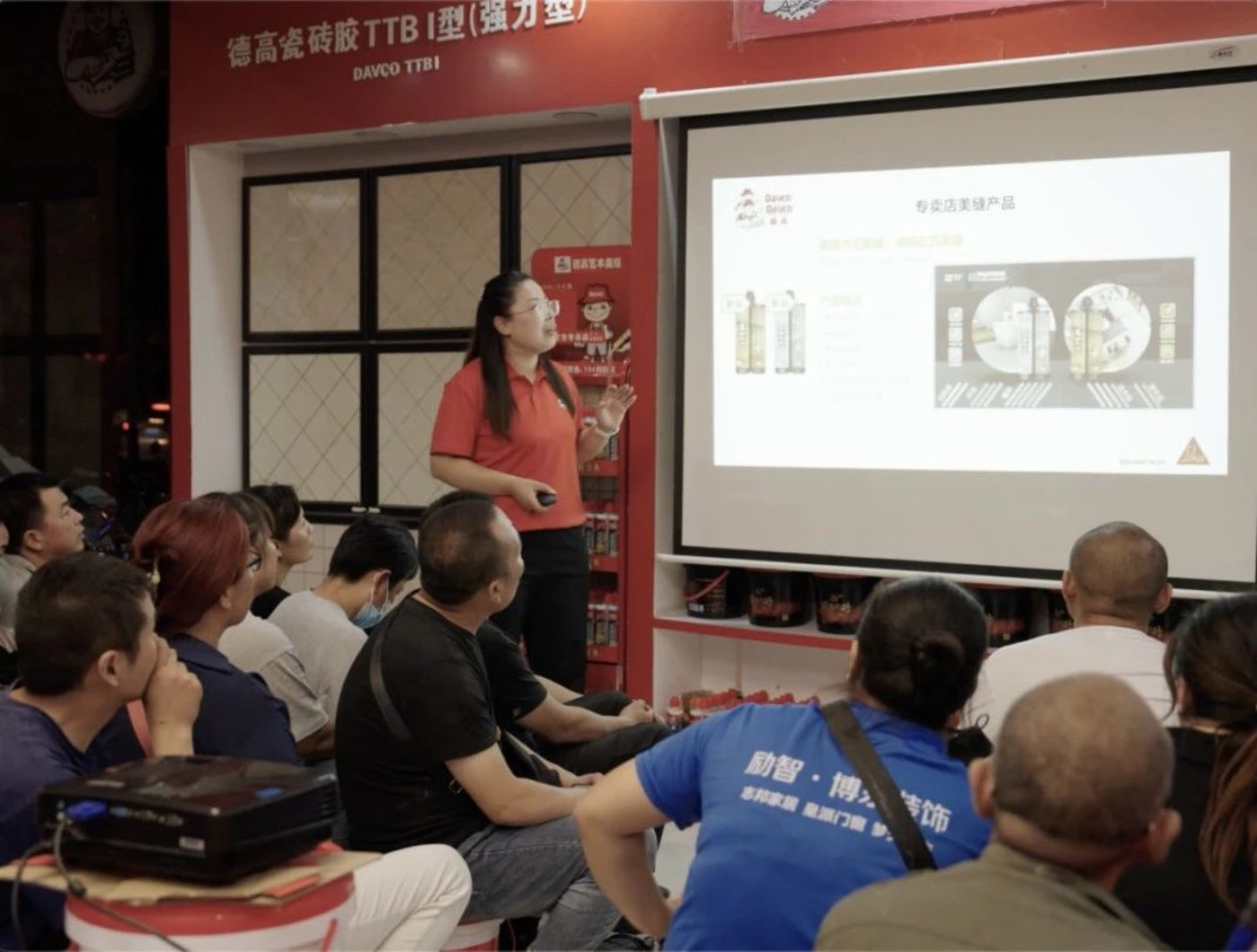Even today, when online shopping is gradually becoming the home of consumption, consumers enter an offline store and are surrounded by a dazzling array of products. At the same time, they will also be touched by the fireworks in the world. This sense of "presence" is the core value that offline retail companies cannot replace.
Once upon a time, these "markets" played a huge role in the development of the retail industry. With the rapid expansion of domestic e-commerce channels, the rise of short video platforms, the rise of offline operating costs and the rapid change of user consumption habits, new variables continue to emerge, crowding out the development space of offline retail channels.
For market retail channels, the cornerstone of their continued existence remains market control, and their core capabilities are also market control.How to break through the physical limitations of the offline, extend the reach space of the online market, and operate the relationship with "people" through efficient "field control" has become an urgent problem that offline retail enterprises want to solve.Fortunately, after years of exploration and accumulation in the private sector, the global digital operation of online and offline omni-channel integration is accelerating, bringing new ways and solutions for offline retail enterprises to seek growth.
In the retail industry, retail is usually divided into two different forms according to distance, far-field retail (online e-commerce) to compete for price, and near-field retail (shopping malls/supermarkets/offline stores) to compete for experience and convenience. Today, all-weather, multi-scene consumer demand has become the mainstream. Consumers not only want the convenience and speed of online shopping, but also want the high-quality experience of offline stores. Enterprises have also begun to turn to the business layout of deep integration of near and far fields to achieve full-scene satisfaction for consumer needs.
The key to achieving near-far field linkage is the upgrading of the business model of online and offline omni-channel connectivity, as well as the support of global digital capabilities.
As a large-scale retailer, Watsons’ digital construction has unique sample value. At present, Watsons aggregates over 200 million users and paid members over 60 million, covering 90% of urban women aged 18-45. In Watsons’ digital strategy, based on users’ growing multi-channel experience and requirements, it innovatively deploys the O + O (Offline and Online) retail model. Through in-depth cooperation with Tencent, Watsons will organically integrate offline stores with diverse digital touchpoints such as Mini Program, WeCom, and community, so as to achieve offline and online integration, providing users with a closed loop of consistent product experience, services, and shopping needs across multiple platforms.
Under the O + O model, physical stores remain the bedrock of Watsons’ business…Through physical stores, Watsons BA provides consumers with high-quality trial and shopping experiences, such as free makeup, eyebrow trimming, SPA, etc., to establish a close emotional connection with consumers, win their trust, and gain a huge natural traffic source. Watsons makes full use of the natural traffic entrance of offline stores, and continuously introduces traffic into the private domain to achieve offline and online traffic interoperability.

At the same time, Watsons BA has established long-term connections with consumers through Mini Program, WeCom, community and other tools to meet the diverse needs of consumers at more levels. Consumers can place an order through the Watsons Mini Program at any time, choose to pick up the goods at the store, or enjoy the fast 30-minute lightning delivery service at home, and can also book store services online.
Therefore, whether offline or online, as long as it is the consumption scenario that customers desire, Watsons allows them to choose the goods and services they need at any time, anywhere, and at will.
Compared to Watson’soffline onlineIntegration, with Wanda as the representative of the shopping mall industry, they hope to grasp both inside and outside the venue, continue to strengthen strong connections with customers, owners and brands, and strive to achieve a longer life cycle of communication and interaction with consumers both inside and outside the venue.
Wanda Commercial Management is the leading representative of China’s commercial real estate. There are more than 480 Wanda Plaza in more than 200 cities across the country. In just 7 days of the Spring Festival in 2023, the passenger flow of Wanda Plaza will reach 160 million. Wanda Plaza not only has the largest offline consumption scene, but also is an early digital enterprise in the industry. Its omni-channel digital construction also has typical reference value.
Previously, the interaction channels between shopping centers and consumers were usually one-way, low-frequency and limited to the venue. Most operators paid more attention to the time customers spent in their malls, and rarely considered their actions and needs after leaving the mall. But in fact, the customer’s time in the mall is very short, and how to continue to reach after leaving the mall determines whether the shopping center can convert traffic into "retention".
Wanda Plaza quickly realizes the full access of brand merchants by creating the Mini Program that integrates the inside and outside of the mall, which is equivalent to rebuilding hundreds of "Wanda Plaza" online. With the Mini Program as the carrier, Wanda Plaza can on the one hand reach consumers more accurately, and optimize the offline "shopping" experience scene through interaction, card and coupon discounts, and secondary marketing after payment. On the other hand, it can also aim at the after-departure scene to achieve both the convenience of "shopping" and online shopping for users, and deeply empower offline.
In addition to the Mini Program, Wanda Plaza also gives full play to the advantages of offline recruitment, directs traffic to the online, and uses the community as the main carrier to carry out membership refinement operations. Under this series of actions, Wanda Plaza has accumulated millions of fan users in a short period of time, and groups users based on different scenario channels, and adopts differentiated operation strategies to enhance customer activity and fan value.
At the same time, Wanda Plaza is also actively trying to acquire customers from online through live broadcast, and feed traffic back to offline. Wanda Plaza has cooperated with Tencent to build a live broadcast model suitable for shopping centers, which has quickly run through the live broadcast monetization model of shopping centers from the perspectives of rights organization, material presentation, channel dissemination, and data optimization. The highest single live broadcast sales exceeded 5 million yuan.
With the advent of the mobile Internet and the digital age, consumer touchpoints have increased geometrically. In order to better maintain consumer relationships and effectively undertake their diverse purchase and service needs, enterprises’ omni-channel marketing has been on the line.For market enterprises, omni-channel is not simply to enhance the layout of online channels, but also to build their members’ operating capabilities. How to continuously maintain and enhance the value of the existing client base, seize the deep interaction and frequent repurchase of the high-sticky loyal client base, has become one of the core issues of enterprises in the global digital business.
Kid King is a recognized digital benchmark in the mother and baby industry. In response to the characteristics of long consumption cycles, high individual consumption, and focus on refined services among consumers in the mother and baby industry, Kid King has focused on membership from the very beginning, and has innovatively adopted the "heavy membership model". Through the link of "interaction generates emotion – emotion generates stickiness – stickiness brings high-yield members – high-yield members’ word-of-mouth affects potential consumer members", it has deeply cultivated the single-customer economy.
As an industry leader, Kid King’s own brand positioning and business logic are also constantly changing in the process of industry development. Kid King’s English brand name is "KidsWant", including: K-Knowledge, I-Idea, D-Discovery, and S-Sport. Taking the LOGO as an expression of brand philosophy as an example, Kid King’s interpretation of "KIDS" has completed the retail from the traditional people’s freight yard to the service dimension that accompanies the growth of users.

Looking at the development process in recent years, the most crucial reason why Kid King can achieve incremental leadership is that it not only has the courage to innovate and change from 0 to 1, but also has the strength of forward-looking layout and then strategic leadership. Over the past 14 years,Kid Wang is data-driven and has built an omni-channel operation model of rapid integration and development. Its strong digital capabilities have become the hard core support for long-term development confidence.It is reported that KidsGPT, a self-developed "AI parenting consultant model", was launched on June 1, 2023, aiming to provide KidsGPT members with a higher-dimensional and more innovative digital service experience. As of September 2023,The cumulative registered members of Kid King exceed 61 million, the number of APP members exceeds 56 million, the number of Mini Program members exceeds 53 million, and the cumulative output value of black gold PLUS high-end members exceeds 2 million.

For Kid King, its core members are maternal and infant end point consumers, while in the business model of Sikad High, its core members are decorators.
Sika Decaux is a brand of the Swiss Sika Group, which specializes in building decoration materials such as tile glue, sealant, and waterproof. Like many traditional industries, in order to adapt to the highly fragmented offline needs in the past, Sika Decaux has established a huge and complex dealer system. At present, there are more than 3,000 specialty stores in the country, 250,000 outlets, which is a typical "B2b2C" model. But unlike ordinary building materials stores, 70% or even 80% of Sika Decaux’s products are sold to decorators. Therefore, how to do business with decorators has become the key to Sika Decaux’s long-term growth.
The group of decorators is very large, and the construction period, age, work style and even daily living habits of each type of work are very different. "For example, the tiling master basically has a partner, either a couple or a team. The construction period is as long as ten days and a half months, and they may know each other." Li Xue, the manager of the Sikad Gao Xingtai store, said that the masters have their own circle and life. The connection between the store and them is relatively weak, and there is a lack of communication bridges. It is not easy to manage the relationship with this group.
At this time, the cooperation with Tencent has allowed Sikadegao to find a new entry point. Sikadegao uses a combination of specialty store cybertribe operations and cloud store orders to "recruit" decorators. Specifically,Sikadegao and Tencent Smart Retail launched the "Lark Campaign" to strengthen the operation of decorators through the WeCom community, and cooperate with online cloud stores to better expand customers and improve performance.In 2022, Sikaad High completed training in more than 2,000 stores.

Pan Feng, director of the business department of Sikad High Store, concluded: "Our store is a’lark ‘community with three things: people enter the group, chat, and money comes in." With the blessing of the community, the store has also become a "third space" for decorators, allowing decorators to find a sense of belonging outside of home and work. Even many masters feel that they are only in the circle when they enter the group. Under this strategy, in 2022, the Sikad High Lark community has accumulated 160,000 master members, achieving 30 million online sales.
In addition, under the impetus of the overall digitalization strategy, Sikadegao has also established a number of digital systems to improve operational efficiency. andIn 2022, more than 50 sets of basic systems will be fully migrated to Tencent Cloud. With the help of Tencent, a set of exclusive IT architecture has been designed to meet the needs of cloud resilience and security. With the guarantee and digital system of Tencent Cloud, the efficiency of all aspects of Sikaad High has been improved.According to Sikaad High, cost savings of 10% to 20% are expected, and more importantly, the ability to improve security defenses.
The focus of traditional offline retail is mainly on "market" and "goods". Having good and comprehensive products, good business district location and full stack service are the keys to the success of retail business. Today, the focus of market enterprises returns to the element of "people". Consumer experience and satisfaction are crucial to enterprises. How to shift from the focus on "market" and "goods" to people-centered, focusing on changes in consumer demand has become a problem that offline retail must overcome.
Specifically, how can brands build more comprehensive, more dimensional and granularity user portraits? How to find the key path that affects consumer decision-making? How to establish in-depth communication with consumers to improve user experience?
In the face of these challenges, a key part is to break down the traditional "data chimney" and turn it into a globally available asset under the premise of data security and consumer privacy protection, and turn it into productivity.This has also led many companies to focus on digital tools such as SCRM (Social Customer Relationship Management), CDP (Customer Data Platform), and MA (Marketing Automation). Through the application of these tools, companies can conduct global user data asset mining, understand client base profiles and needs, thereby improving insights into end point stores and consumers, and drive overall operational strategy optimization based on data.
In terms of consumer data asset operation, MINISO has been at the forefront of the industry. In the past 2022, MINISO has more than 60 million registered members, more than 23 million WeCom private domain users, and a retention rate of more than 75%.
In the early days of Miniso, like most retail retailers, it faced three pain points:
In terms of data, both online and offline have huge traffic, but the data of each channel is scattered, unable to get through, and the driving force of data for marketing activities is weak; in operation, the lack of a systematic operating system, high operating costs, unable to provide differentiated services according to different users and scenarios, and failed to form core competitiveness and brand characteristics; in stores, it is impossible to effectively empower end point stores.
In order to get through the data of various channels and improve the user experience, the Mini Program has officially assumed the vanguard and the front-end carrier of the refined operation of private domain traffic. Among them, the foundation of the MINC membership system is the data center centered on tools such as WeCom SCRM, which can analyze and connect user behavior and consumption data, such as user purchase history, message records and other information, so that enterprises can optimize products and services for consumers in a targeted manner.
For example, after a consumer purchases a certain product, the data center can not only identify the consumer’s liking for the product, but also further analyze their liking level and other attributes and interests. In the subsequent push, it will be recommended according to the consumer’s true preference. At the same time, on the basis of data, enterprises can precipitate rich dynamic tags, hierarchically manage users of different tags, and provide data support for big data tags and precise strategies for subsequent membership development and private domain integration.
Kule Chao Play, as the leading brand of domestic tide play grocery retail, has nearly 300 stores across the country. On the basis of continuing to strengthen the offline scene experience, it has built a private domain position with community, Mini Program, and APP as the core, and has precipitated high-quality users from public domains such as e-commerce platforms, Douyin, and WeChat Channels to private domains.
In order to better achieve the accurate reach of users, Kulechao Play also chooses to focus on the touchpoint data and behavior analysis of consumers, and use tools to empower members to operate. Among them, Kulechao Play uses high-level functions such as WeCom SCRM to achieve efficient linkage between headquarters and storesofServe users, build a brand consumer data foundation, and drive consumer experience improvement.
The same is true for Sikad High, which has more than 3,000 specialty stores, 250,000 distribution outlets across the country. However, the channel sales network in more than 1,500 cities and counties across the country also makes the end point business data have certain distortions and lags, making it difficult to meet the needs of enterprises in the digital age to quickly identify customer pain points and adjust more favorable production and marketing models.
Therefore,SCRM and CDP tools of Tencent Marketing Cloud are used to connect the dealer system covering the whole life cycle.For example, tools such as SCRM can better assist store managers in community back-end management, and these digital capabilities will help enterprises radiate more small B’s that were originally difficult to access technical services. With the use of this tool, Sikaad High can gradually revitalize its store managers, salespeople and other front-line personnel. While communicating the information of the headquarters, it can also grasp the store dynamics and activity effects in a timely manner, respond to store questions, and break the previous store boundaries. In addition, the store’s marketing data and business data can also provide reference for headquarters sales, marketing strategies and other decisions.
"People and freight yards" are an eternal topic in the retail industry.In the era of global management, through digital means, the actual site is extended and the understanding of people is deepened, allowing field retailers to find a way to break through the situation.Among them, those who can master the new digital gameplay faster may be able to better serve consumers, achieve the matching of people and goods, and build a more comprehensive and intelligent growth path.